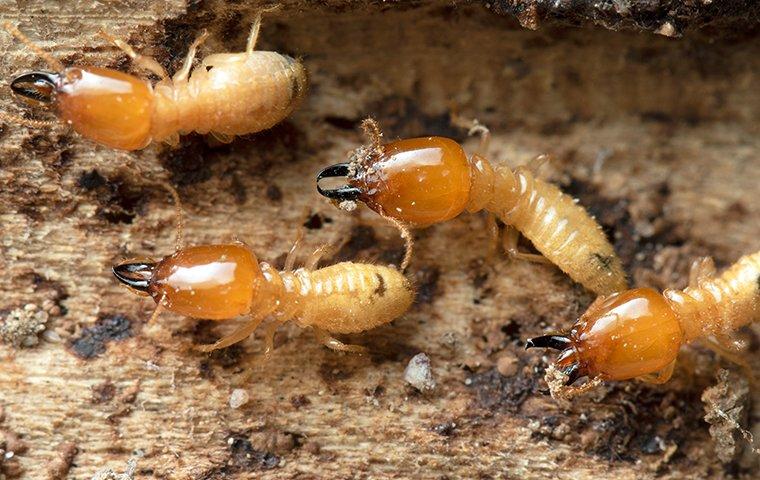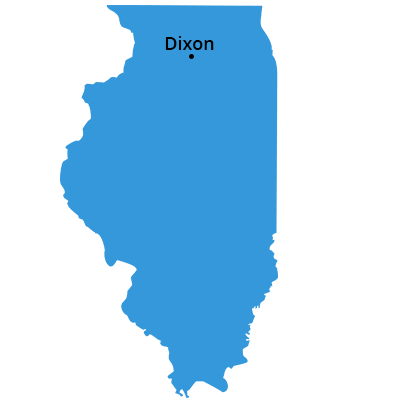If you own property in St. Charles, it is wise to consider the threat that termites present. Termites are sneaky insects that tunnel into your yard and enter your home in ways you may not expect. All you need is a basic understanding of these wood-damaging insects to guard against the damage they can cause. Join us as we look at how to perform a termite inspection to find evidence of termites on your property. We'll shine a light on how termites may enter your home and what you can do to prevent them. We'll also tell you the best long-term care for termite control. Everything you need to know about termites and termite pest control in St. Charles is right here. If you'd prefer to talk with one of our team members regarding your concerns, remember that we're only a phone call, text, or email away. We'll connect with you in whatever way is best for you. We're here to help!

You're Not Likely To See A Termite: How To Identify Signs Of Activity
The main issue with termites is not that they damage the wood of St. Charles homes, but in "how" they do it. Termite damage doesn't happen overnight. It doesn't even happen in a few months. It takes many months and even years for damage to accumulate. So, how do they do so much damage? They do it because they are sneaky pests. You're not likely to see termites on your property, and if you do, you may not realize you've found a warning sign of active termites in St. Charles. Let's look at both of these issues.
Why am I not seeing termites in my yard?
Most of the termites in a colony are workers. The workers live their entire lives in utter darkness and they prefer it that way. They don't even like to come out of their tunnels in areas touched by moonlight, so you won't see them crawling around in the open. You also won't see them crawling on your interior walls. Termites stay inside their tunnels. But, you might see termite workers if you uncover them. You may do a renovation and find them in a wall stud. You may dig up your landscaping and see them in the ground. You may move some wood lying on the ground and find workers underneath. Worker termites are ⅛ of an inch long and look like stout ants or maggots with legs.
One kind of termite you may see is a swarmer. They're called swarmers because these termites gather into a swarm during the mating process. If you see a termite swarm on the ground, you're not likely to miss it. Swarmers have white wings and are quite noticeable when crawling around together. But you can miss swarmers for several reasons:
- Swarms last less than an hour, and the new queens and kings quickly disappear into the ground.
- You can miss an airborne swarm, particularly at night.
- You may only see one swarmer. A swarmer is about ⅜ of an inch long, which includes the length of the body and the wings. If you don't look carefully at the insect that just landed on the deck railing next to you, you may miss the warning sign.
There is more to missing warning signs than having termites elude detection. You may look right at a termite or signs of termites in your yard and not realize what you are looking at.
Did I just miss a warning sign?
There are a few ways termites let you know they're near. It is essential to know how to recognize these warning signs.
- Termites create shelter tubes on surfaces. These tubes are created by worker termites, so you'll find them in places where the sun (and moon) can't light the surfaces. When you see these shelter tubes, you might mistake them for mud splatters. They are made with soil and termite saliva, which makes them look like mud.
- Termites sometimes damage wood in damp and shaded spaces and in spots that are close to the soil. Unfortunately, termites aren't the only organisms that damage wood. You can have wood rot, carpenter ants, wood-boring beetles, or some other issue. Termite damage will have mud associated with it.
- Termite swarmers shed their wings during the mating process. Shed wings are a warning sign. But other insects do this as well, insects such as ants. Termite wings are equally sized and look like a teardrop shape that is stretched.
- Termites sometimes make a noise inside wood. The noise isn't what you might think. It isn't the sound of termites chewing on your wood. It is the sound of soldier termites warning the workers of a threat. They bang their heads on the tunnel walls to raise the alarm. The sound is quite loud to the workers, but you could miss it. You may only notice a light clicking or rattling sound.
Termite detection is one of the pillars of termite control. You can perform these inspections yourself or have a licensed professional inspect your property for you. If you're in St. Charles, contact Pest Control Consultants for annual inspections.
Understanding The Termite Threat: Why Termites Infest Homes
It is hard to detect evidence of termite damage. We touched on why this is the case, now let's examine a few facts to help you zero in on where, and how, you may find termite damage. These are connected to the big question of "why" termites infest homes in St. Charles.
- The termites in St. Charles are subterranean termites. They create nests in the soil and continually look for food. Their search for food can bring them into your yard. While moving a food source and looking underneath for worker termites is one way to detect them, it is best to not provide a food source for termites and invite them into your yard.
- In the search for food, termites will target buried wood and wood-to-ground contact on structures. Both of these will increase the chances of an infestation. As you look for termites, move soil away from wood and check for damage.
- Subterranean termites can come above ground to eat wood. If they don't find wood-to-ground contact, they'll have to create shelter tubes. Inspect your home in dark and humid spaces. Also, inspect interior walls for these tubes.
- Termites prefer untreated wood but will feed on pressure-treated wood if it is compromised by water damage. You may detect termites inside the timbers of your home by tapping on them. If they sound hollow, you can know for sure that something is creating tunnels within.
Long before you find warning signs of an infestation, you can deter termites and work to prevent damage. Let's examine some of the many ways property owners reduce the risk of termite infestations in St. Charles.
Protecting Your Property: Effective Termite Prevention Methods
Termites are primarily motivated by two factors: food and moisture. Food comes in the form of wood, cardboard, paper, clothing, and other objects that have cellulose. Moisture is found in water-damaged wood or oversaturated soil.
- Pick up dead branches and store them in a container.
- Store campfire wood off the ground.
- Remove stumps and dead wood debris.
- Nurse unhealthy trees back to health.
- Pick up junk piles and store them in containers.
- Replace wood skirting with a termite-resistant material.
- Replace mulch with pea stones.
- Maintain good gutter health to reduce perimeter saturation.
- Trim landscape vegetation to keep your plants as dry as possible.
- Water your plants in the early morning.
- Repair any damaged water pipes or spigots.
General home maintenance and a few simple and smart alterations can give you quite a bit of protection against termites. Many of these tips will also provide protection from other pests. They are well worth your effort. Are they the best way to protect your property against termites? No. But it is better to do something than nothing at all. So, what is the best solution for termites? Let's take a look at how professionals handle termite control and prevention.
Professional Termite Control: Long-Term Termite Control And Protection
Long-term termite control in St. Charles is the best way to get rid of termites and prevent termite infestations. At Pest Control Consultants, we use the most trusted brand in professional termite control. Termidor is a liquid termite control solution that works in a new and ingenious way. Old products eliminate termites on contact, which is not the best way to control termites. Termidor is undetectable to termites; when they pass through treated soil or wood, they pick up the active ingredient and share it with other termites. The makers of Termidor call this the transfer effect. Since Termidor is undetectable and is spread by termites, it is extremely effective. When professional Termidor treatments are maintained and backed by annual inspections, there is little to no chance of termite damage. There is no time like the present to guard your property against termite damage! If you're in the St. Charles area, contact Pest Control Consultants for advice or service.
 Customer Reviews
Customer Reviews
